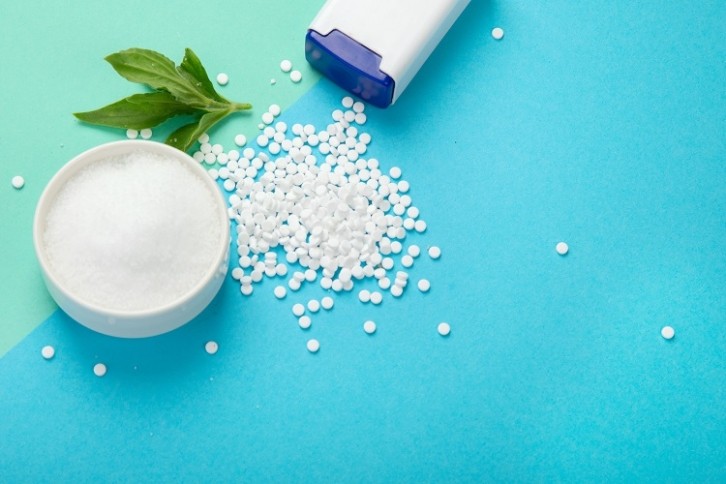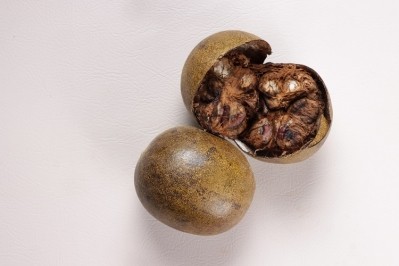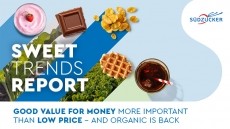Are sweeteners good or bad for the planet?

Sugar substitutes promise so much. Not only can they significantly reduce sugar content in food and drink, but often do so while maintaining – or even exceeding – the sweetness perception of sugar.
Consumer acceptance and public health tend to dominate the sugar substitute discussion. Less common is the topic of environmental sustainability. But with more and more manufacturers turning to sweeteners – both artificial and natural – it's important to assess their eco credentials. Are sweeteners good or bad for the planet?
Sucralose: The ‘tough’ molecule that doesn’t degrade easily
It’s impossible to answer this question in one go, since a wide variety of sweeteners exist (from aspartame to saccharin, stevia to sucralose), and all have different sustainability credentials.
But fresh research out of the US has sought to assess the environmental impact of one popular no-calorie sweetener: sucralose.
The artificial sweetener, otherwise known as E955, adds minimal calories to food and beverage products since the body is unable to break it down. In fact, the compound is so stable that it even escapes wastewater treatment processing and ends up in driving water and aquatic environments.
“We can’t break down sucralose, and a lot of microorganisms can’t break it down either, because it’s a really tough molecule that doesn’t degrade easily,” explained University of Florida assistant research scientist Tracey Schafer, who co-authored a study recently published in the academic journal Environmental Monitoring and Assessment.
“So there are a lot of questions about how it is affecting the environment and whether it’s something that could impact our microbial communities.”
Do consumers prefer the taste of sweetener to sugar?
That’s a tough one to answer. Some sweeteners come with a bitter aftertaste that consumers are less keen on. But depending on the application and formulation, sweeteners can prove a hit with consumers.
The proof? Look no further than the overwhelmingly popular ‘light’ versions of sugar-heavy carbonated soft drinks by the likes of Coca-Cola or PepsiCo – both of which contain aspartame. In the US alone, diet sodas make up more than a quarter of the carbonated soft drink market, according to Statista.
Aquatic bacteria ‘spikes and crashes’ when exposed to sucralose
Researchers centred their research around the impact of sucralose on cyanobacteria (an aquatic photosynthetic bacteria) and diatoms, microscopic algae that account for more than 30% of food production in the marine food chain.
The team exposed samples of soil and water (from both brackish and freshwater sources) to different sucralose concentrations, measuring photosynthesis and microbial respiration every four to six hours, and every 24 hours, over the course of five days.
The findings are concerning. Compared to the control group, the concentration of brackish cyanobacteria ‘spiked and then crashed’ when exposed to sucralose.
The concentration of freshwater cyanobacteria increased, but both freshwater and brackish diatoms displayed an overall decreasing trend in population compared to the control group.
Sucralose: A threat to microbial communities?
“There is the potential that the freshwater communities might be mistaking sucralose for a nutrient, for a sugar they can use as food,” explained lead author Amelia Westmoreland.
But whether this is the case or not, sucralose’s ability to both increase and decrease microbial community populations is considered a possible threat to a naturally balanced ecosystem. “Extreme examples of how this could play out are the diatom community could disappear, and the other extreme is this community could completely overtake everything else,” said Westmoreland.
The study is considered a ‘good first step’ in fully understanding the impact of sucralose on aquatic environments, with Schafer hoping it will ‘drive more research forward’.
From a public health perspective, reducing sugar consumption improves health outcomes. In the UK, where a ‘sugar tax’ incentivises makers of sugar-sweetened beverages to cut sugar content (a popular approach is to swap out sugar for sweetener), the levy may have prevented more than 5,000 cases of obesity every year among primary school-aged girls.
But the story may not be as rosy as first thought, with some sweeteners coming under fire over health concerns. Recent research has linked zero-calorie sweetener xylitol with increased risk of heart attack and stroke, neotame has been found capable of damaging the human intestine and causing illness, and aspartame has been classed ‘possibly carcinogenic’ by the World Health Organization.
Are other sweeteners better for the environment?
Sucralose is an artificial sweetener, but not all sweeteners fall under this category. Stevia, for example, is considered a ‘natural’ sweetener, and when grown in Europe, is thought to be more environmentally sustainable than cane and beet sugar.
That’s according to EU-funded research published early last year, which found that production of steviol glycosides extracted from stevia grown in Europe produces just 10% of the greenhouse has emissions associated with sugar production, according to a life cycle assessment.
Researchers analysed environmental impacts in terms of both production mass and sweetness equivalence, comparing those to sugar derived from cane and beets. Findings revealed that steviol glycoside mix RA60 produced from the stevia leaf in Europe causes less environmental impact across a wide range of markers, when compared to sugar. For example, it offers an opportunity to reduce land use or water consumption compared to the same level of sweetness as sugar.
The global warming potential of RA60 was found to be 20.25kg CO2e/kg on a mass basis and 0.081kg/CO2e/kg on a sweetness equivalence basis.
The primary source of impact was the field production of stevia leaves, with the second most important coming from extraction of the RA60. “Leaf processing and seedling propagation were minor contributors to life cycle impact,” explained the researchers.
By removing the international transport element, global warming potential was reduced by 18.8%. Compared with sugar on a sweetness equivalence basis, RA60 has approximately 5.7% to 10.2% the impact for global warming potential, 5.6% to 7.2% the impact for land use, and is lower across most other impact categories.

“The use of steviol glycosides and similar natural products could be sweet news for the health of our planet,” said the University of Surrey’s Dr James Suckling, lead author of the study.
While many non-nutritive sweeteners (NNS), like steviol glycosides, don’t present the same health risks associated with sucrose – such as tooth decay, obesity, or diabetes – because they are many times sweeter, the researcher did suggest more research is required into the health impacts of the NNS category.
“The use of steviol glycosides and similar natural products could be sweet news for the health of our planet. However, our study readily admits that much more work needs to be done to understand the health impacts of steviol glycosides and other non-nutritive sweeteners when consumed as part of a wider diet.”
Source: Environmental Monitoring and Assessment
‘Sucralose (C12H19Cl3O8) impact on microbial activity in estuarine and freshwater marsh soils’
Published 13 April 2024
DOI: https://doi.org/10.1007/s10661-024-12610-5
Authors: Amelia Westmoreland, Tracey Schafer, Kendall Breland, Anna Beard, and Todd Osborne.
Source: The International Journal of Life Cycle Assessment
Environmental life cycle assessment of production of the high intensity sweetener steviol glycosides from Stevia rebaudiana leaf grown in Europe: The SWEET project’
Published 14 January 2023
DOI: https://doi.org/10.1007/s11367-022-02127-9
Authors: J. Suckling, S. Morse, R. Murphy, S. Astley et al.
































